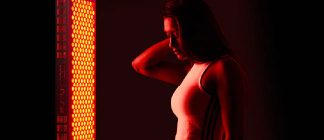Unlocking the Potential of an Ancient, Non-Invasive Technique...
Breech presentation, where the baby is positioned feet first in the womb during the last month of pregnancy, occurs in 3-4% of all pregnancies and often leads to caesarean sections, presenting risks and costs to both the mother and the healthcare system. The most common treatment is External Cephalic Version (ECV), a manually administered procedure with a 50-60% success rate, but it carries risks of premature labor and can be emotionally stressful.
As an alternative, moxibustion, a Chinese medicine technique involving burning a herb close to the skin at a specific acupuncture point (UB67), has been proposed to change breech presentation to cephalic (head down) presentation. A recent update to a Cochrane Review by Coyle et al., 2023 (PMID: 37158339) which included 13 studies involving 2181 women, found moderate-certainty evidence that moxibustion combined with usual care probably reduces both non-cephalic presentation at birth and the use of oxytocin before or during labor, which is a significant finding. However, it probably results in little to no difference in the rate of cesarean section.
Additionally, while East Asian Medicine practitioners in the West often combine moxibustion with acupuncture, a 2021 systematic review (Liao et al, 2021 PMID: 34067379) found that each “acupuncture-type intervention” increased the rate of cephalic presentation at birth compared to usual care. However, the 2023 Cochrane Review concluded that there is insufficient data to determine if the combination of moxibustion and acupuncture is more effective than moxibustion alone.
One hypothesized mechanism of action for moxibustion is that stimulating the UB67 point may induce hormonal changes in the mother, prompting the uterus to gently contract and increase fetal activity, as indicated by a study published at JAMA (Cardini et al, 1998 PMID: 9820259). However, the exact mechanism remains unknown, and more research is needed.

Moxibustion, a non-invasive technique with a rich history in traditional Chinese medicine, is emerging as a promising alternative to ECV. Unlike ECV, moxibustion does not carry the risks of premature labor and emotional stress, making it an attractive option for many expectant mothers. Starting moxibustion treatment before 37 weeks of pregnancy probably reduces the chance of baby being head‐up at birth, but does not reduce the number of babies born by caesarean section.









